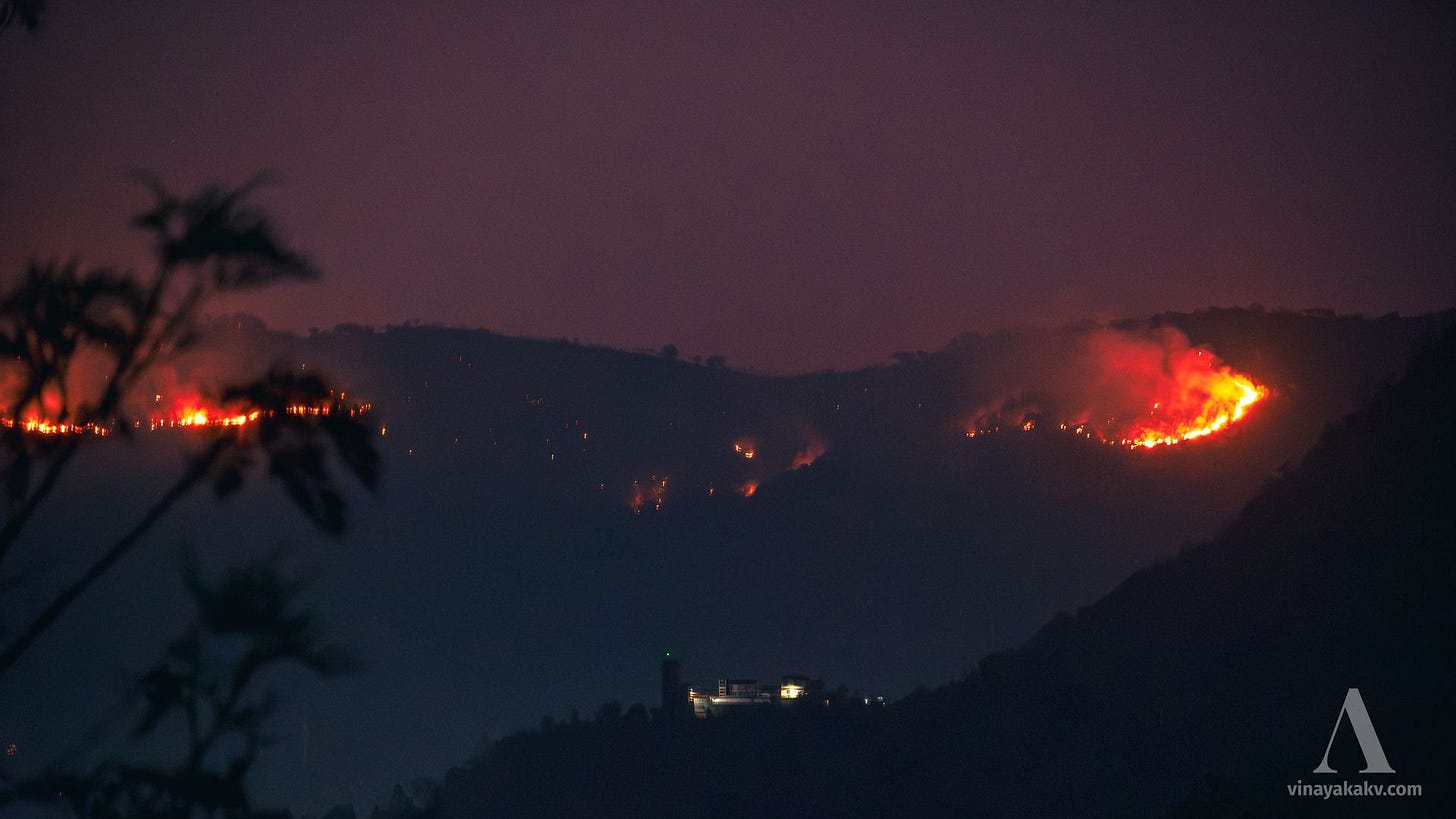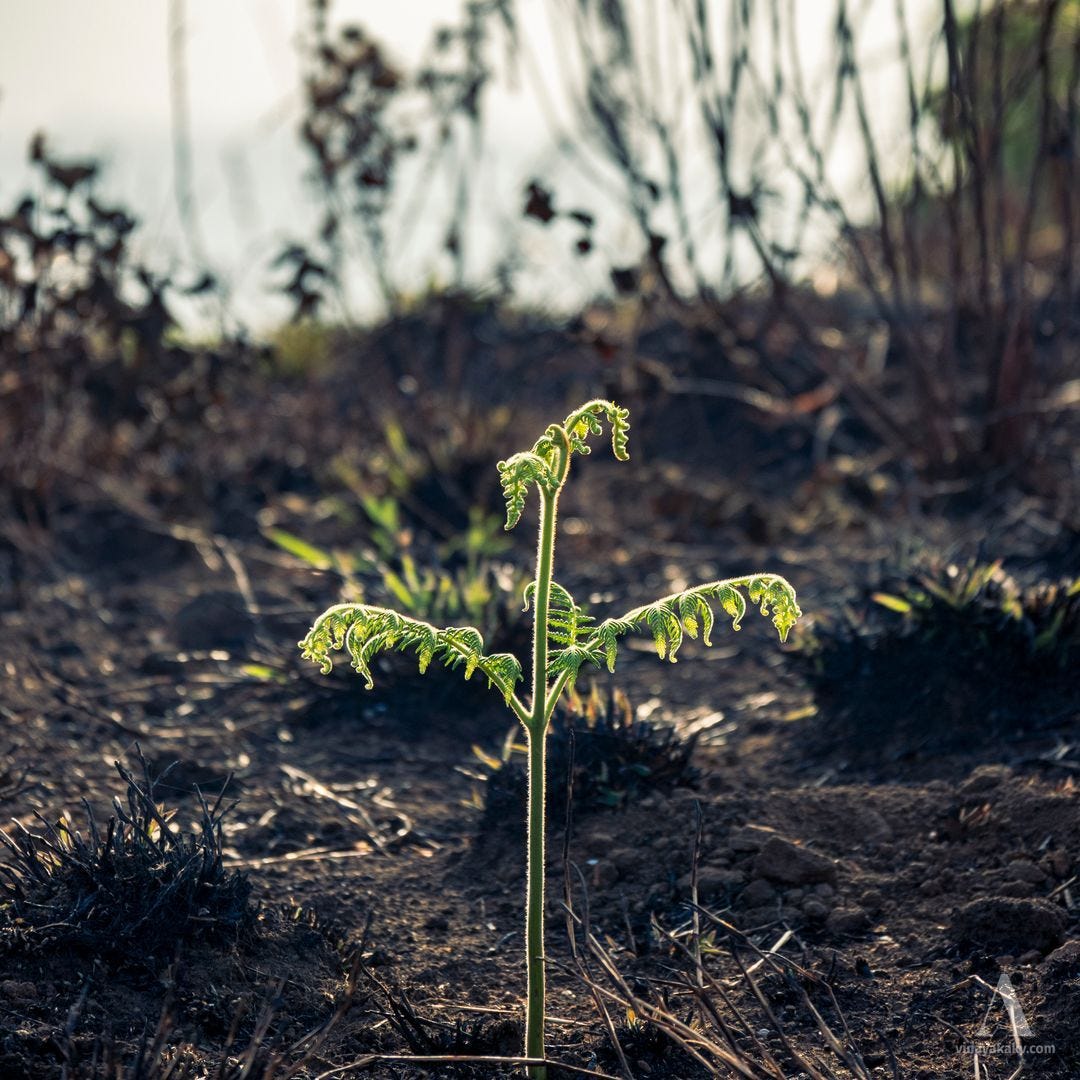On Fire
Burning mountains and Standstill forests
The cloudless, warm days and moderately cool nights are the perfect recipe for drying out the montane shola grasslands of the Western Ghats. The lush green grasses slowly turn light brown and set seeds.
In these conditions, a small spark of fire is enough to set the entire mountain ablaze. During the day, the fire appears as distant smoke, clearly differentiated from the clouds and mist.
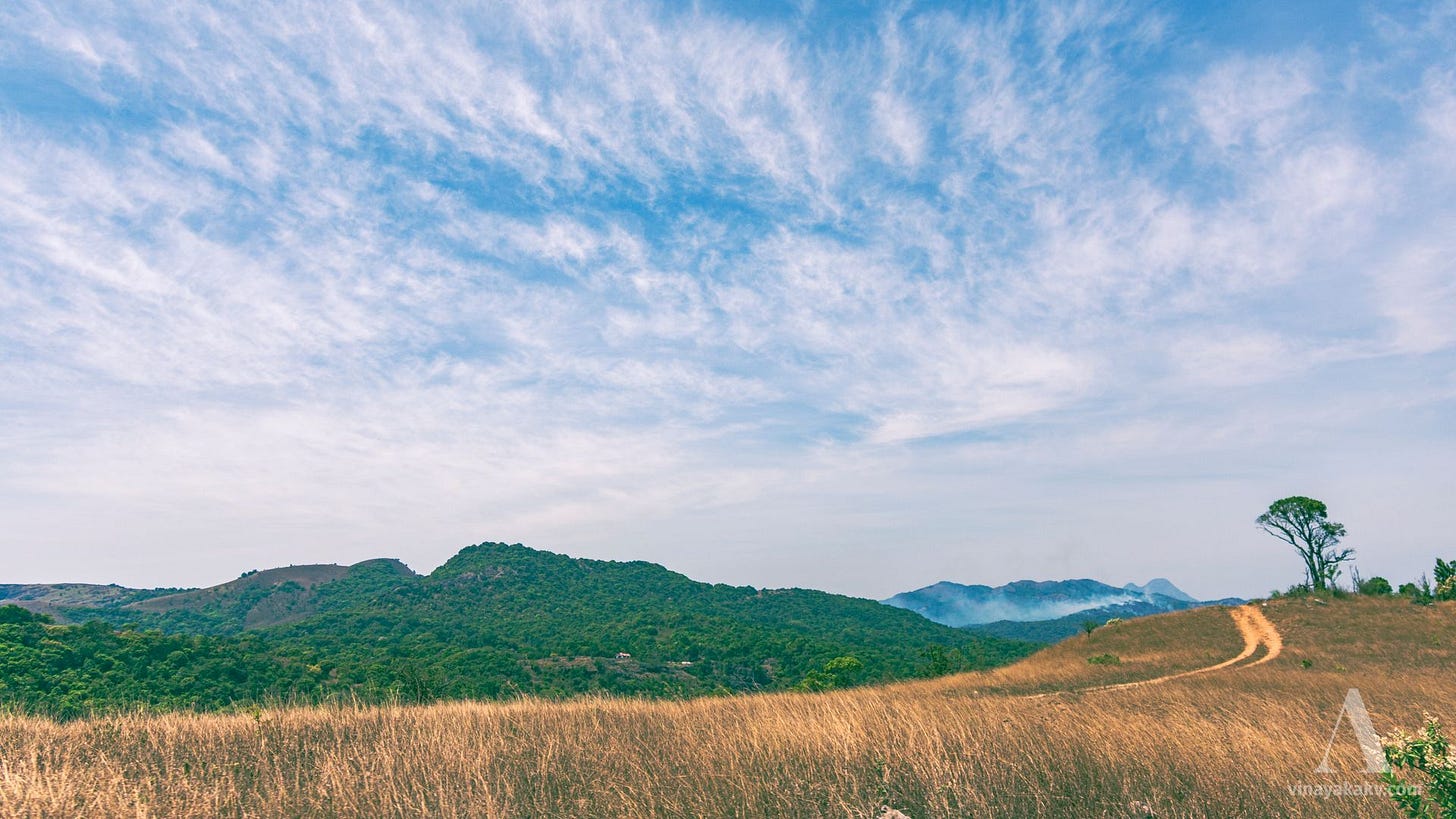
As the sun sets, the lines of fire become visible, slowly moving across the mountain, consuming grasses in its path.
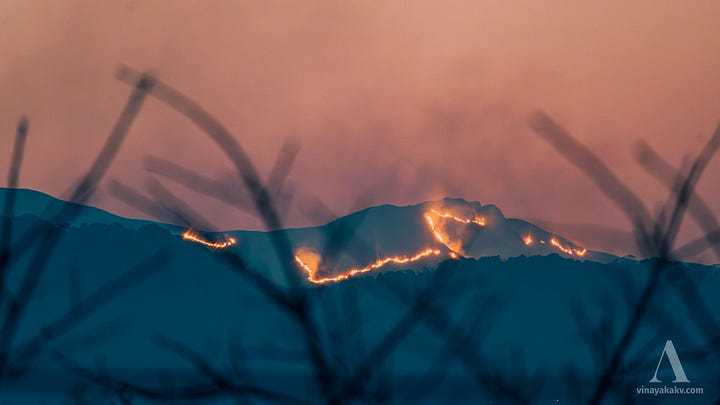
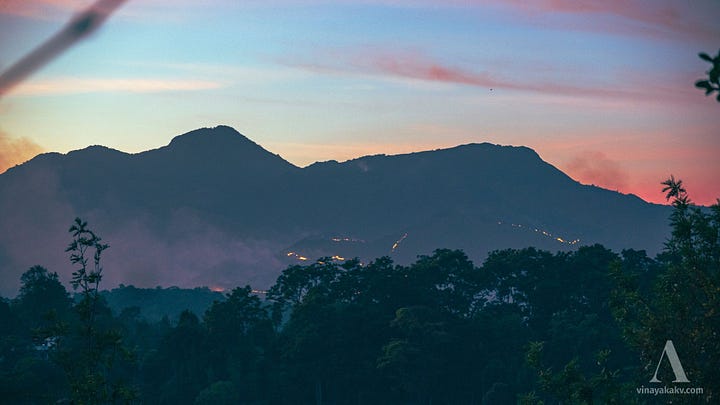
These lines can break into multiple chains depending on the availability of fuel. Sometimes, sparks can fly with the wind and ignite distant grasses.
These fires, combined with smoke, can create a silhouette of the mountain terrain, revealing its layers.
The Recovery
Once ignited, the fires will not stop until they have consumed all available dry grass, turning it to char. The fires are limited by the green patches of forests and any water bodies, typically not raging for more than half a day.

The fires usually stop at the boundary of the shola forests, where the still-green plants resist the fire and prevent its further spread.
Several grassland species appear to have adapted to fire events, making them resilient and unaffected by the fires.
The grasses also recover quickly, fueled by the availability of morning dew. They fully recover once the summer rains begin.
The rate of recovery can vary between species, which may lead to certain species gaining an upper hand in the ecosystem.
Causes and Effects
Most of the fires in the Western Ghats are anthropogenic (human-induced), primarily caused by:
Cattle grazing, to ensure a supply of fresh grass for livestock
Control of insect and reptile populations
Preventing fuel buildup
Accidental fires spreading from nearby agricultural plots that use fire to clear weeds
Fires are common across all regions of Karnataka where shola grasslands are found. The photos of the fire and burnt mountain in this article were taken in the Chikkamagaluru, Hassan, and Kodagu districts.

While fires leave the evergreen forests unharmed, their effects are more pronounced in the deciduous forests in the interior. There have been incidents of large forest fires causing harm to both wildlife and human properties.
While the existence of the grassland-forest complex, or shola, is believed to predate human evolution and settlement, there are arguments that the occasional fires help control the progression of the forest. They achieve this by burning younger seedlings at the forest boundary, while keeping those inside the forest intact.
The fires cause temporary air pollution and reduced visibility, especially if the affected area is large. Repeated fires in the same region can lead to irreparable damage to grassland species and cause soil erosion. Therefore, it is important to understand tribal practices, view them through the lens of science, and respect them.
Related
Following is a post from 2022 where I explored several aspects of such fires.
The Song of Life and Fire
It is the tropical winter in the Western Ghats region of India. The winter here is not different from the summer, except the mountains experiencing cooler nights. As the water becomes scarce in the ground, many plants start to flower in the hopes of starting a new generation in the upcoming monsoon rains. The grasses set seeds and become dry. The Shola …




